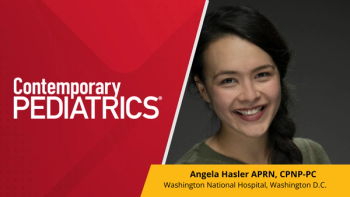
ADHD: Evaluating advances in treatment
An article published in Contemporary Pediatrics 25 years ago instructed pediatricians on medications to treat attention deficit disorders (ADD). Their observations were so perceptive that, with a few tweaks, they could be republished as a 2009 update on attention deficit/hyperactivity disorder (ADHD).
An article first published in Contemporary Pediatrics 25 years ago by the husband-and-wife team of Sally and Bennett Shaywitz instructed pediatricians on medications to treat attention deficit disorders (ADD),1 but it went much farther than that, including information on diagnosis and etiology of ADD, as well as challenges for the patient and family. Their observations were so perceptive that, with a few tweaks here and there, they could be republished as a 2009 update on attention deficit/hyperactivity disorder (ADHD).
For example, the authors describe their own observations of familial tendency to ADD. Even though the cause of ADHD is unclear, we now recognize that for the great majority of ADHD patients, there are genetic factors, as demonstrated by data from twin studies conducted in the United States and medical databases in Scandinavia and Great Britain. We even have identified 7 or 8 genes that have been linked to this diagnosis, most of these genes being regulators of dopamine and/or norepinephrine release, transport, or uptake. The diagnostic technique propounded by the Shaywitz team in 1984 involved gathering historical and descriptive behavioral information about the child from a variety of sources-the child, the parents, and the teacher. That is still the gold standard method of diagnosis, as recommended by the American Academy of Pediatrics guidelines for diagnosis of ADHD, published in 2000.2 The authors also pioneered the use of rating scales to narrow down the diagnosis, using items from the Yale Children's Inventory. One can readily see that many of the 18 items from the DSM-IV criteria for ADHD (1994) appear on that earlier inventory. Though these behavioral criteria are not specific for ADHD and may be seen in a variety of other developmental and behavioral situations, using the DSM-IV criteria has made a significant advancement in diagnostic clarity and accuracy.
The authors very correctly identified the learning issues associated with ADD/ADHD. Children with ADHD struggle greatly in school, not only with inattention and lack of organizational skills, but also with associated learning disabilities that compound the behavioral problems. Furthermore, learning disabilities themselves cause inattention and distractibility, complicating a diagnosis of ADHD. All this must be sorted out in the diagnostic process.
We also know the medicines augment the function of dopamine and norepinephrine at the neuronal synapse, particularly in certain frontal and prefrontal regions such as those associated with executive function. We know, as did the Shaywitz team, that the medication adverse effects are numerous, but we now have multiple forms of medications (immediate, intermediate, and long acting) and in various vehicles (liquid, pills, transdermal) to modify or circumvent adverse effects.
What, then, are some of the current issues in ADHD care not known about or dealt with 25 years ago? For one, behavioral therapy was not talked about much. Most of the work in this area, by people like Satterfield, Pelham, and others, was just beginning to get published. Now behavioral therapy for ADHD is recommended by the AAP as 1 of the only 2 evidenced-based treatments.3
In addition, there wasn't any mention of coexisting conditions such as anxiety, depression, oppositional defiant disorder, conduct disorder, or substance abuse in the 1984 article. Now we recognize that not only are these conditions extremely common in ADHD patients but that they must be diagnosed and treated appropriately or else they will impair or prevent success in ADHD treatment outcomes.4
Last, the recognition that ADHD is a chronic disorder is crucial. We know that 50% or more of ADHD children will continue to manifest difficulties into adult life, with impairment in employment, marriage, and social behavior, creating a burden for the medical, social, and judicial systems.
At present, we lack the specific knowledge to either predict or prevent these consequences. Most of our monitoring efforts have been directed toward symptom control, which medication can do very effectively. Unfortunately the answer isn't that simple, and more research is needed to delineate type, severity of ADHD, and all the related coexistent behavioral, educational, and socioeconomic issues that greatly influence outcomes.5
DR. GEPHART is a clinical professor at the University of Washington, School of Medicine, Seattle and an ADHD consultant with Pediatrics Associates, Bellevue, Washington. The author has nothing to disclose in regard to affliliations with or financial interest in any organization that may have any part of this article.
REFERENCES
1. Shaywitz S, Shaywitz B. Devising the proper drug therapy for attention deficit disorders. Contemporary Pediatrics. 1984;1(2):12-24.
2. American Academy of Pediatrics. Diagnosis and evaluation of the child with attention deficit/hyperactivity disorder. Pediatrics. 2000;105:1158.
3. Gephart H, Leslie L. ADHD Pharmacotherapy. Contemporary Pediatrics. 2006;12:46.
4. American Academy of Pediatrics. Treatment of the school-aged child with attention deficit/hyperactivity disorder. Pediatrics. 2001;108:1033.
5. Molina BS, et al. The MTA at 8 years: Prospective follow-up of children with combined-type ADHD in a multisite study. J Am Acad Adolesc Psychiatry. 2009;48:484.
Newsletter
Access practical, evidence-based guidance to support better care for our youngest patients. Join our email list for the latest clinical updates.







